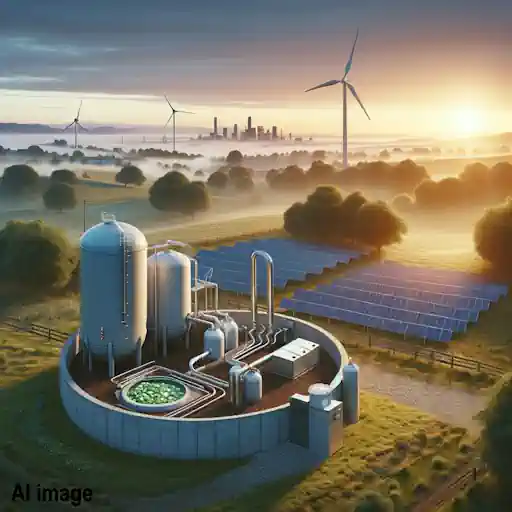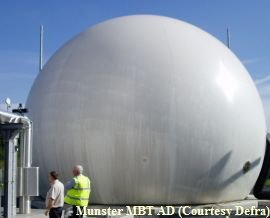 The Feed-In Tariffs (FiTs) – An Introduction
The Feed-In Tariffs (FiTs) – An Introduction
April 2010 saw the introduction of a system of feed in tariffs (FITs) in England, Scotland, and Wales to encourage the small-scale development of low carbon electricity generation facilities by providing revenue.
A “clean energy cashback” is what the UK Government described it as in 2010, and it applied to generators of electricity of up to 5 MW capacity. The FITs scheme, set out in the Feed-in Tariffs (Specified Maximum Capacity and Functions) Order 2010, operated alongside the Renewables Obligation, under which large scale renewable energy facilities, including anaerobic digestion plants, had for a number of years been incentivised for the deployment of large-scale renewable electricity generation.
Before You Read Anything Else Read The Following Update!
The Smart Export Guarantee (SEG) pays homeowners and businesses for the renewable electricity they generate but don’t use. It came into force in January 2020 and replaced the previous Feed-in Tariff (FIT) scheme.
The Smart Export Guarantee (SEG) compensates homeowners and businesses for renewable energy generated but not used. It went into effect in January 2020, succeeding the previous Feed-in Tariff (FIT) scheme.
The Smart Export Guarantee is a UK government-backed clean energy initiative that rewards households and businesses in the United Kingdom for generating their own renewable electricity. Customers who generate excess energy can send it to the national grid in exchange for a small payment under the scheme. This programme is an updated version of the Feed-in Tariff programme.
The Smart Export Guarantee
The Smart Export Guarantee (SEG) is a government-backed scheme that was introduced in the United Kingdom in 2019. It is designed to encourage households and businesses to generate their own renewable energy and export any excess energy they generate back to the national grid.
Under the SEG, energy suppliers with more than 150,000 customers are required to offer an export tariff to customers who generate electricity using solar panels, wind turbines, hydroelectricity, or other renewable sources. The export tariff pays customers for any excess energy they export to the grid, providing a financial incentive for renewable energy generation.
The SEG replaced the previous feed-in tariff scheme, which provided payments for both the generation and export of renewable energy. However, the SEG only covers the export of energy, and customers who generate their own renewable energy must find other ways to finance their installations.
Renewable energy proponents applaud the SEG's introduction because they see it as a step in the right direction towards the UK's goal of achieving net-zero carbon emissions by 2050.
By encouraging households and businesses to generate their own renewable energy, the scheme has the potential to reduce the country's reliance on fossil fuels and increase the uptake of clean energy.
While the SEG is still a relatively new scheme, it has already been successful in encouraging the installation of renewable energy systems. Many energy suppliers offer competitive export tariffs, and customers who generate energy can choose the best deal for them.
Overall, the Smart Export Guarantee is an important scheme for the UK's renewable energy sector. By providing a financial incentive for renewable energy generation, the SEG has the potential to accelerate the country's transition to a low-carbon future.
Update: January 2019 – This article was originally written in August 2011. There have been several updates to the FiTs since that date which have reduced the payments to new AD Plants. Use this article as an introduction to FiTs only. The UK government has announced that all new FiT applications will cease on 29 March 2019. Existing commitments to continue paying FiT to existing AD plants within the scheme, will be honoured.
The original article as posted in 2010 follows:
The concept embodied within the FiTs is that the UK shall now have a comprehensive mechanism, to provide a predictable level of return on renewable power installations. This they hope will maintain and increase interest from investors in the potentially now, relatively secure profitability, of generating electricity on a small scale and by non-traditional methods.
Fresh stakeholders should now appear on the scene and deploy and incentivise smaller-scale technologies. This, the government clearly hopes, will produce innovation, create jobs, increase manufacturing and provide installation opportunities, through which the public will become more aware of renewables and their ability to provide electricity for the nation’s use.

The Climate Change Act 2008 sets out targets for the UK for the reduction in greenhouse gases (GHG) by 2020 and 2050. The European Union has also committed to generating 20 percent of energy from renewable sources by 2020 and to reduce GHG by 20 percent in the same period. In order to meet those targets, among other actions, a significant proportion of electricity needs to be produced without fossil fuels (known as being “de-carbonised”) and treated differently.
This all adds up to a mini-revolution in the way that power is generated and distributed around the nation, and it will be duplicated in very many other countries as well.
With unrest in the Arab world this year, in particular, it cannot also have escaped many people that the supply of electricity is rapidly becoming a big security issue.
So, behind the scenes, the UK Government has clearly identified that the Renewables Obligation (RO) which was not designed with small-scale projects in mind, was failing to bring forward small-scale renewables technologies.
Most of the public, and that goes for investors as well, have little understanding of how the RO works. Those that did consider that the balance of potential profit was negatively balanced against risk for small-scale projects and that they were not “sufficient to justify the investment”.
Hence, the FITs scheme was born. It is one of the schemes enabled by the Energy Act 2008 and is a part of the UK’s overall Renewable Energy Strategy.
There is also something else known as the Renewable Heat Incentive (RHI) which is a separate scheme [now also closed], relating to renewable heat generation.
What are the UK Feed-in Tariffs Scheme Components?
The FITs scheme comprises of two financial instruments through which payments will be made to generators and paid for by the UK’s licensed electricity suppliers. The largest suppliers, those with more than 50,000 domestic customers, are obliged to offer FITs, whereas participation by smaller suppliers is optional.
Elements of the Feed-In Tariff
- The first part [was] a generation tariff differing by technology and scale that [was] paid per kilowatt-hour (kWh) of electricity generated and metered by a generator. This generation tariff is paid if the electricity is used on-site or exported to the electricity network.
- The second element of the FIT [was] an export tariff that is metered and paid as a guaranteed amount or, in the case of very small-scale electricity generation, as a proportion of the generation in any period.
For exported electricity, the generator [opted] to receive a guaranteed payment of 3p/kWh exported or may sell their electricity on the open market. Off-grid generators, not connected to the national electricity supply system are also eligible for FITs. The cost of the payments [were] shared between electricity suppliers by “levisation” whereby each supplier [paid] an amount proportional to their share in the electricity market in Great Britain.
Which Technologies Did the Feed-In Tariff Apply To?
The UK Government limited the scheme to technologies that it considered [were] market-ready and [could] therefore be realistically deployed in the short-term without excessive risk.
Within that category the following technologies [were] included in the scheme:
New Projects, up to the 5MW limit, in:
- Anaerobic digestion
- Hydro power
- Solar-photovoltaic, and
- Wind projects.
- Domestic-scale micro-CHP (combined heat and power) with a capacity of 2 kW or less [was] allowed into the scheme on a pilot basis for up to 30000 units. The latter will be reviewed as soon as 12,000 installations [were] reached, anticipated to be in mid-2012.
- Biomass, biomass CHP, and non-renewable micro-CHP [were] not included.
The Generation Tariff Rates
The value of the generation tariffs applicable for each technology is viewable online. (See them at the DECC website here. )
All generation and export tariffs [were] linked to the retail price index (RPI). The tariffs are meant to deliver an approximate rate of return of between 5% and 8% for optimally sited installations. Tariffs available for new installations will be reduced each year to reflect predicted technology cost reductions to ensure that new installations receive the same approximate rates of return as those already supported through FITs.
This process is known as “degression”. …
The government [expected] quite rapid technology improvement, resulting in a lower cost for photovoltaic technology, and to encourage further cost efficiencies, the degression rate [was planned to] be increased by a further 0.5 percent from 2015. Once an installation [was] allocated a generation tariff, it [remained] fixed (subject to RPI) for the life of the installation or the life of the tariff, whichever is shorter.
FITs income for domestic properties generating electricity mainly for their own use will not be taxable income for the purposes of income tax. The expense of providing export meters for small-scale generators [were] factored into the scheme, and therefore the intended roll-out of smart meters, for the first year of operation of the scheme [got] help.
As an interim measure only, where export meters do not exist or have not been provided at the generator's expense, payments of export tariffs to generators of 30 kW or less of total installed capacity [was] made on the basis of deemed or estimated exports.
The percentage of exported electricity generation to be deemed is 50 percent of exports for solar PV, wind, and micro-CHP and 75 percent of exports for hydro and AD installations. The generator will be expected to install a generation meter for each technology in order to measure output separately. However, the export tariff is uniform regardless of the technology adopted.
ROCS
ROCs or Renewable Obligation Certificates, were part of the Renewables Obligation, which in turn was an important part of the UK government's plan (in common with the rest of the EU nations) to achieve a 20% reduction in carbon emissions from 1990 by the year 2020.
The Renewables Obligation (RO) was the larger twin of the Feed-in Tariff and was designed to incentivise the generation of electricity from eligible renewable sources in the United Kingdom. It was introduced in England and Wales, and, in a different form, in Scotland (as the Renewables Obligation (Scotland)) in April 2002 and also in Northern Ireland in April 2005.
The RO placed an obligation on licensed electricity suppliers in the United Kingdom to source an increasing proportion of electricity from renewable sources. In 2006-07, it was 6.7% (2.6% in Northern Ireland).
This figure was initially set at 3% for the period 2002–03.
Since electricity suppliers passed on this cost as a small increase in the tariff for the electricity they sell, all electricity consumers effectively paid the cost of ROCs.
[Page Updated on Nov 17, 2014; June 15, 2021; 12 March 2023; Latest Update: 4 March 2024]






I am aware that Biogas can be compressed, the same way as natural gas is compressed to CNG, and used to power motor vehicles. Wikipedia says that in the UK, for example, biogas is estimated to have the potential to replace around 17% of vehicle fuel. If that is to happen I would think that even the small biogas plants will need to be upgrading and compressing their gas for use in their vehicles. That’s where I am concerned about the economies of scale. Will it truly be possible to apply upgrading technology in the small scale?
Good question. I don’t know but I have found what appears to be a great paper which is available online and which provides detailed assessments of various biomethane upgrading techniques. I suggest the click here for the Califorinia Biogas Collaborative.
Thank you for the good writeup. I’m in the planning stage and would like to use the methane for brewing beer. My question is do you heat a digestor or is it warm enough that the bacteria is happily eating away all the time? I fancy the idea of calling the setup ‘brewing with poo’. Cheers.